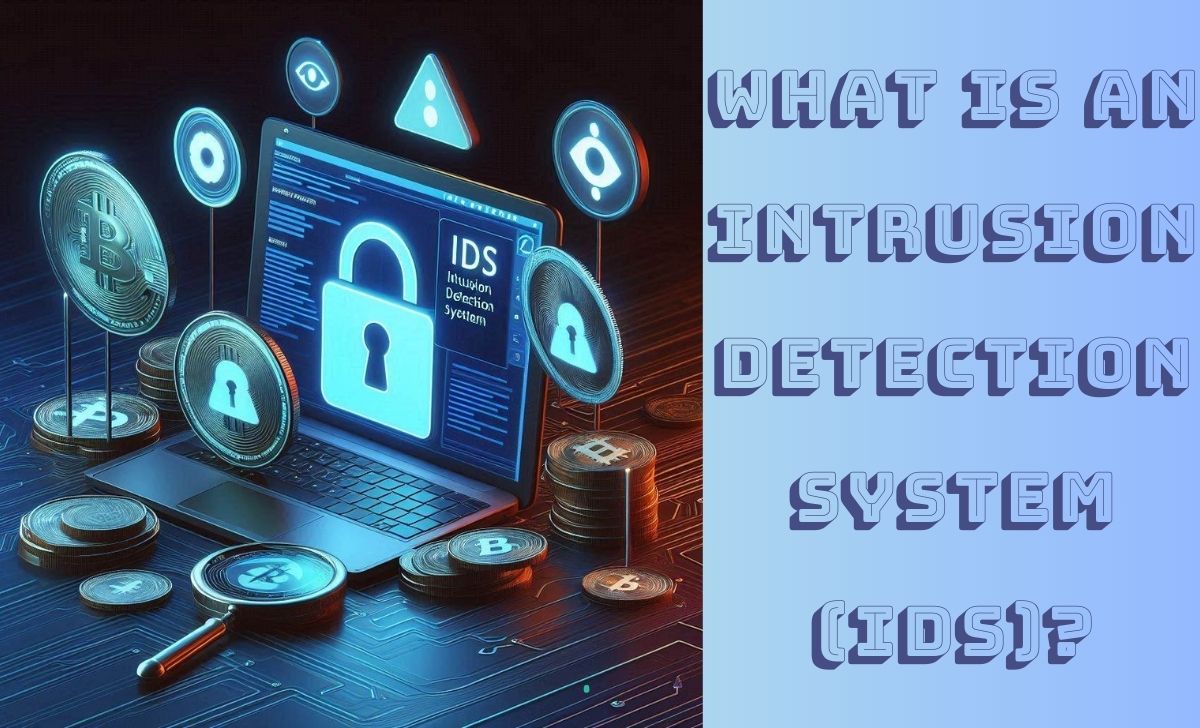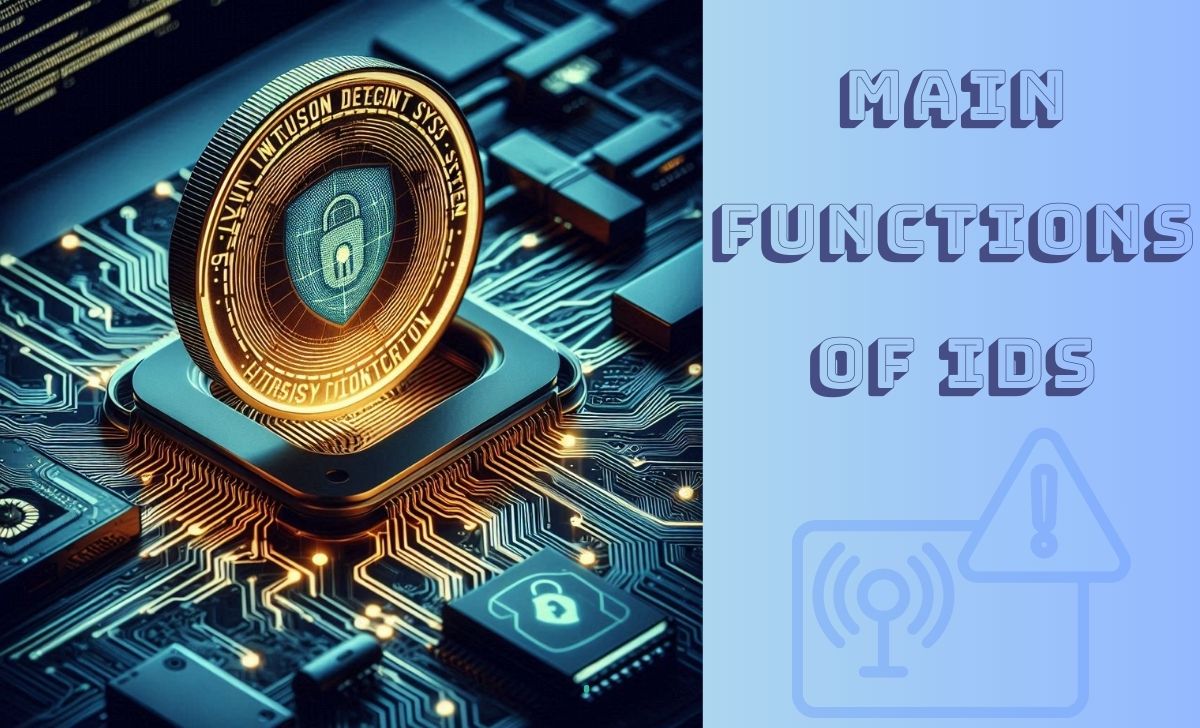Intrusion Detection System (IDS) is a term often heard in the field of network security. IDS plays an important role in monitoring and detecting intrusions or attacks on the network system. However, many people still do not understand how IDS works and the different types of IDS.
This article by AZCoin will help you grasp the basic information about IDS, how it works and why it’s important in protecting the network system.
What is an Intrusion Detection System (IDS)?

An Intrusion Detection System (IDS) is a security tool designed to detect intrusions or attacks in a network or computer system. An IDS monitors the activities and traffic within the system, looking for signs of abnormalities or potential threats.
The primary goal of an IDS is to detect and report suspicious or unusual events so that administrators can respond promptly and prevent threats.
Main functions of IDS

The main functions of IDS include:
- Network traffic monitoring: IDS analyzes data packets and network traffic to detect unusual behavior patterns.
- Intrusion detection: The system is capable of detecting attacks on network and computer systems by comparing current behavior with known attack patterns.
- Providing alerts: When suspicious behavior is detected, Intrusion Detection System sends alerts to network administrators so they can take timely preventive measures.
- Logging: IDS records events and actions to help analyze and investigate security incidents later, providing valuable information to understand and mitigate any system breaches that may have occurred.
How does an IDS work?

IDS works by monitoring and analyzing network traffic and system activity to detect suspicious behavior. There are two main methods for IDS to perform its function, which are:
- Signature-based analysis: This method compares the activities in the system with a database of known attack signatures. If a behavior or activity pattern matches a signature in the database, the IDS detects and alerts about the threat.
- Behavior-based analysis: This method analyzes behavior and activity patterns to detect abnormal behavior compared to the norm. The IDS will create a profile of normal behavior and compare current activities with this profile to detect suspicious events.
What are the types of Intrusion Detection System?

There are 5 main types of Intrusion Detection System:
- Network-based IDS (NIDS): Monitors network traffic and detects unusual behavior on the network, which helps identify potential data breaches. NIDS are often deployed at strategic points in the network to analyze the data traffic passing through.
- Host-based IDS (HIDS): Monitors actions and events on specific computer systems. HIDS analyzes system logs and activities to detect signs of intrusion.
- Hybrid IDS: Combines both NIDS and HIDS to provide a more comprehensive view of security activities on the network and computer systems.
- Signature-based IDS: Detects attacks based on known attack patterns. This is the type of Intrusion Detection System commonly found in many systems.
- Anomaly-based IDS: Detects unusual behavior compared to normal system behavior, helping to detect unknown attacks.
Why do we need Intrusion Detection System?
Using an Intrusion Detection System is important for several reasons:
- Early threat detection: IDS helps detect unusual activity or unauthorized intrusions into a network, stopping attacks before they cause serious damage.
- Data protection: IDS aids in protecting important data from being stolen or destroyed by hackers or malware, thereby reducing the risk of security breach.
- Regulatory compliance: Many industries require organizations to comply with information security regulations. IDS helps ensure that organizations comply with these regulations.
- Continuous monitoring: Intrusion Detection Systemprovides continuous monitoring, helping to detect and respond quickly to new threats.
- Analysis and reporting: IDS provides detailed reports of security events, helping administrators better understand threats and improve security strategies.
How to deploy IDS

To effectively deploy an IDS, the following steps should be taken:
- Define the objectives: Assess the security objectives of the organization and determine the requirements of the IDS based on factors such as network size, system type and potential threats.
- Select the appropriate IDS type: Choose the type of IDS that fits the organization’s needs, which can be NIDS, HIDS or Hybrid IDS.
- Deploy: Configure the IDS to monitor and analyze network activities and traffic, ensuring it’s deployed at strategic points in the system.
- Monitor and adjust: Monitor the performance of the IDS, adjusting the configuration as needed to reduce false positives and improve detection.
- Raise awareness: Ensure that system administrators are trained on how to use the IDS and respond to alerts to effectively protect the system.
For those looking to explore cutting – edge solutions, checking out platforms like AZcoin – the best crypto exchange for 2024, can offer valuable insights into integrating advanced security measures with your network infrastructure.
Comparison of IDS and IPS
IDS and Intrusion Prevention System (IPS) are both important tools in network security, but they have different roles and functions. IDS doesn’t interfere with network traffic but only provides detailed information for administrators to handle.
In contrast, IPS not only detects threats but also takes immediate preventive measures, such as blocking traffic or adjusting network configurations to protect the system.
While IDS helps monitor and detect security issues early, IPS provides proactive response capabilities to stop attacks before they can cause harm. Depending on specific security needs, organizations can choose to deploy IDS, IPS or a combination of both to achieve the most comprehensive protection for their network systems.
Conclusion
Above is an overview of the Intrusion Detection System (IDS), from its main functions and how it works to the types of IDS and how to deploy them. Hopefully this article will help you better understand the role and importance of IDS in protecting your network and data.

I’m Jessi Lee, currently living in Singapore. I am currently working as a trader for AZCoin company, with 5 years of experience in the cryptocurrency market, I hope to bring you useful information and knowledge about virtual currency investment.
Email: [email protected]











